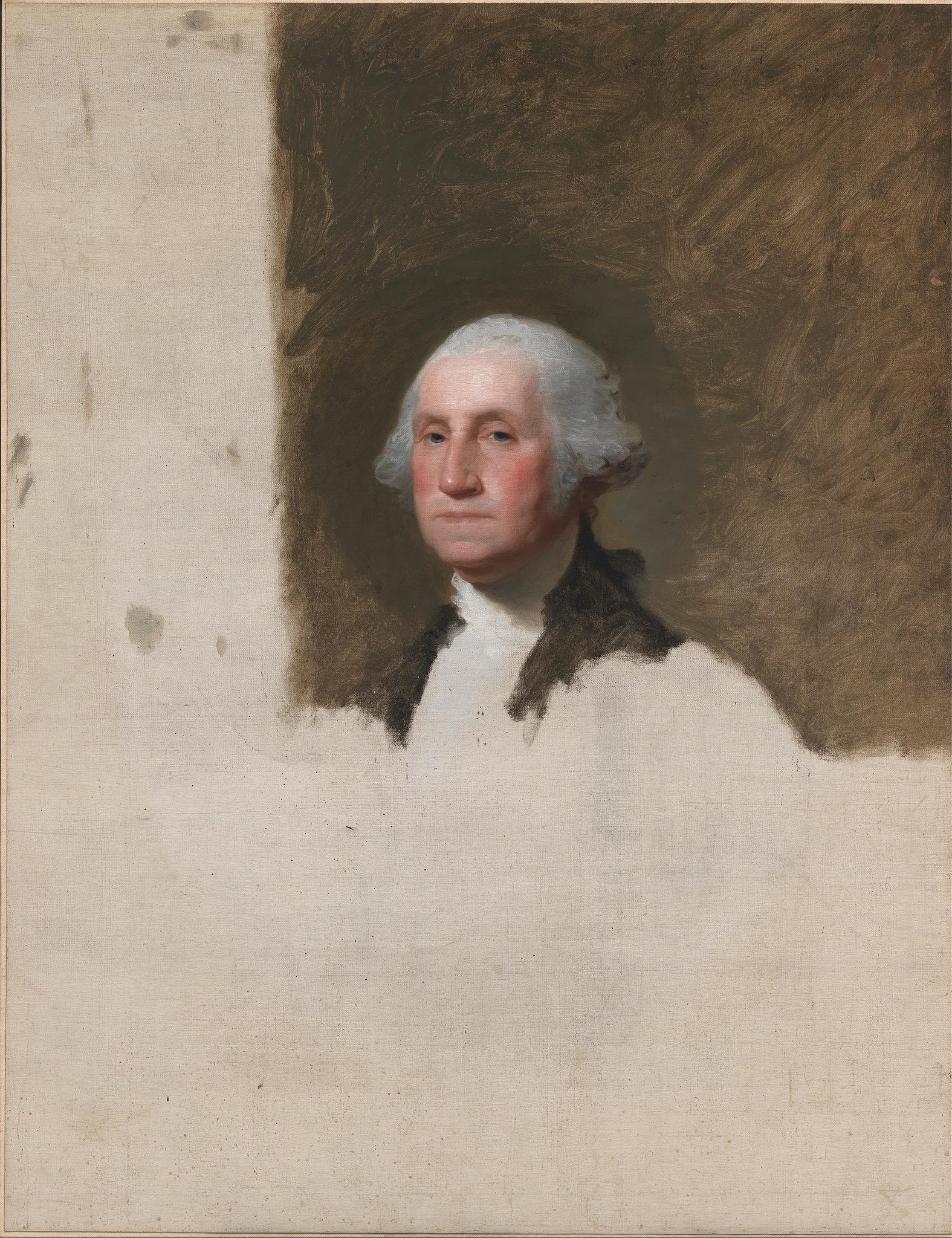The 1796 Athenaeum Portrait by Gilbert Stuart only captures the head and neck of a sixty-five-year-old George Washington who stands out sharply against an unfinished background.
The story behind Stuart’s incomplete work is almost as fascinating as its subject. According to the artist’s contemporary Rembrandt Peale, Stuart captivated Martha Washington with another portrait of her husband so deeply that she commissioned a second painting for herself.
Washington agreed to sit for Stuart, however, the artist did not want to give up this new portrait because he knew that he could use it as a model for future commissions. Stuart purposely left the work unfinished and began to create and sell copies.
He reportedly called these copies his “hundred dollar bills'' after the price he charged for them. It is believed that Stuart ultimately copied 130 portraits from the unfinished work commissioned by Martha Washington. Of those, around sixty survive today.


























![DEl Kathryn Barton [Australian b. 1972] the more than human love , 2025 Acrylic on French linen 78 3/4 x 137 3/4 inches 200 x 350 cm Framed dimensions: 79 7/8 x 139 inches 203 x 353 cm](/sites/default/files/styles/image_5_column/public/ab15211bartonthe-more-human-lovelg.jpg?itok=wW_Qrve3)



